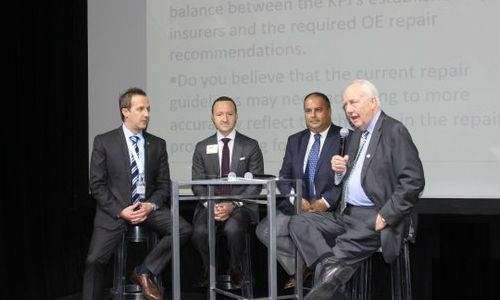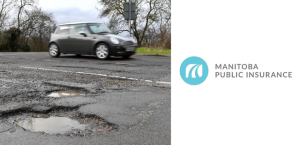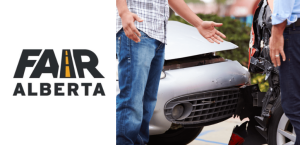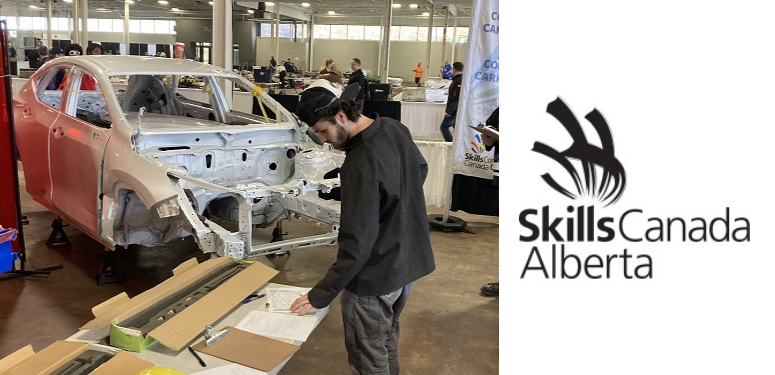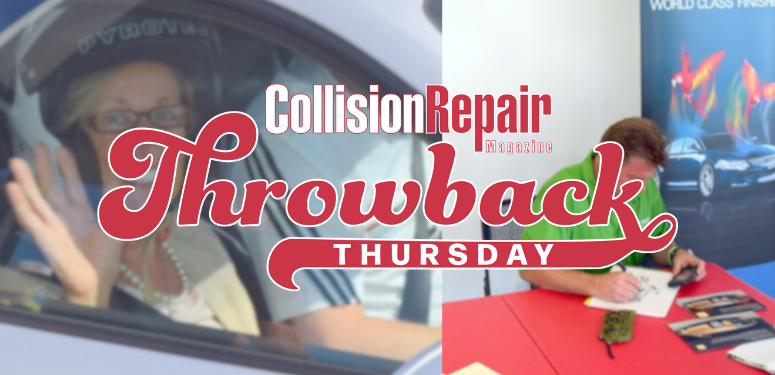By Mike Davey
Toronto, Ontario — February 11, 2016 — It’s rare that a group of repairers gets to hear multiple representatives of major insurance companies discuss the challenges of the collision repair industry. The Canadian Collision Industry Forum (CCIF) offered just such an opportunity through an insurer panel discussion.
The insurer panel took place immediately following the repairer panel at the most recent CCIF meeting in Vaughan, and built on some of the topics raised during that discussion. For more on this, please see “CCIF repairer panel discussion digs into materials, KPIs and the new breed of technician.”
On the panel were Tony Mammone, Director, Claims for RBC Insurance; Tony Sutera, National Vendor Manager (APD) for RSA/Johnson and Luc Ruest, National Vendor Manager for TDI Auto Preferred Partner Network. Larry Jefferies, past Chairman of CCIF, served as the moderator.
The first topic for the panel was the challenge repairers face in effectively managing the balance between the key performance indicators (KPIs) established by insurers and the required OE repair recommendations. Panelists were asked whether the current repair guidelines may need to be adjusted to more accurately reflect changes in the repair process.
“If they’re following the OEM specifications, and it says that, for example, you need to recalibrate a mirror to get the car back on the road, then do a scan, take a photo of the post calibration reading on the scanner that shows the code, and another photo that shows it has been calibrated. Make sure the make and model is showing in the photos, and add it to the appraisal,” said Tony Sutera. “You need to follow the right process to get that vehicle back on the road.”
In a follow-up interview with Collision Repair magazine, Sutera recommended that repairers try to answer questions from the image desk before they’re asked. This can be done by anticipating what they’ll want to know.
“The more detail you can provide, the better. If you’re just going to throw it in, then you’ll definitely get questions,” he said. “Add some comments to show the image desk not just what you did, but why. Show us where the source is. Cooperation between the shop and the insurer is critical. We need that input. Our goals align: to get the insured in and out as fast as possible, with a quality repair at a fair cost.”
The next topic of discussion was OEM subscription sites, specifically the fees paid by repairers to access them. In particular, the idea was raised that perhaps repairers should be compensated for these subscriptions as a line item on the appraisal.
Moderator Larry Jefferies summed up the issue and its associated costs: “When you add up the 17 manufacturers that sell a product in Canada, it becomes a big nut,” he said. “This hasn’t gotten enough airtime yet. How can we absorb that cost, or should we be finding a means of driving compensation?”
It seems as if, with certain insurers at least, there’s already a way for collision facilities to be compensated for those OEM subscriptions.
“We roll it into the training and learning piece,” said Tony Mammone. “If you’ve met certain standards from an I-CAR standpoint, there’s an allowance for accessing those subscriptions.”
This makes sense from the viewpoint of encouraging training, and also as a way to ensure that vehicles are repaired to OEM standards.
“We need to continue to collaborate among industry stakeholders and ensure we have more clarity in what is necessary in providing a safe repair for our customers and an exceptional client experience,” said Luc Ruest.
The OEMs were also central to another part of the panel discussion, specifically the recent proliferation of OEM certified collision repair programs. Panelists were asked if they thought these programs would influence or impact on their choice of repair facilities in the future.
“This theme aligns with much of what we’ve heard from our own clients,” said Tony Mammone in a follow-up interview. “Our policyholders want peace of mind. As complexity rises, it makes sense to align with facilities that have the right expertise.”
For more information, please visit ccif.ca.



